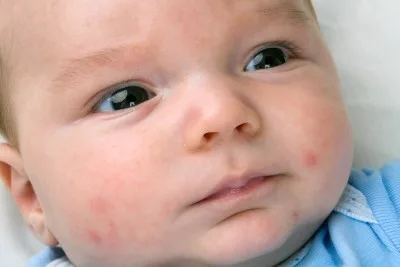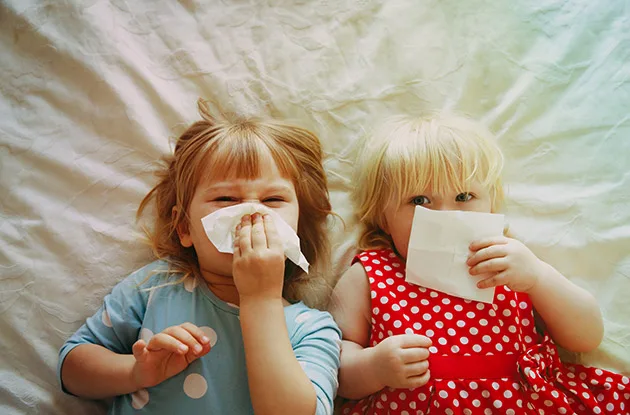Dr. Hemmers of Allergy Center of Connecticut addresses the best ways to treat a baby’s eczema and also comments on whether there are dangers to using steroidal medications or creams for repeat treatments on the baby’s itchy rashes.
 Eczema includes a number of itchy rashes. A common form, seen frequently in infants and toddlers, is atopic or allergic dermatitis. In this condition, a “leaky” skin barrier results in dry patches of skin. Additional allergies produce inflammation and itching.
Eczema includes a number of itchy rashes. A common form, seen frequently in infants and toddlers, is atopic or allergic dermatitis. In this condition, a “leaky” skin barrier results in dry patches of skin. Additional allergies produce inflammation and itching.
When children scratch, the skin becomes more inflamed, prolonging the cycle of disease. The best way to treat this eczema is to maintain a healthy skin barrier and avoid allergic triggers.
|
Here are some tips for good skin care: • Keep your baby’s nails short and clean to reduce the damage from scratching. • Give your child a warm, soaking bath once daily. Use mild, perfume free soaps. If recurrent infection is a problem, your doctor may recommend the addition of diluted bleach. • Immediately after bathing, while the skin is still wet, liberal amounts of moisturizer should be applied. This will help to create a “seal.” • Children should wear loose fitting cotton clothes washed with a hypoallergenic detergent. Avoid wool and nylon. Additional rinse cycles may be helpful. |
For more persistent rashes, prescription treatment may be needed. Topical steroids (creams and/or lotions) are an effective choice. Steroids are naturally occurring substances that are produced in our bodies to regulate growth and immune function. When applied to the skin, side effects are minimal. These include thinning of the skin (atrophy) and temporary loss of pigment. Color changes may be more noticeable in dark-skinned children.
The risk of side effects depends on the strength of the steroid used, the length of time it is used for, the location of skin treated, and the size of the area. Once the skin has improved, the amount of steroid may be lessened. Be sure to follow your doctor’s complete instructions. Providing too little treatment may prolong flare-ups and require more steroid in the long-term. Other complications include thickening or darkening of the skin (lichenification) and infection. An alternative class of non-steroid creams, called calcineurin inhibtors (pimecrolimus and tacrolimus) may be used for children older than 2.
The itching associated with eczema can make children (and their parents) miserable. The problems are especially bad at night when children should be sleeping. Only improving the health of the skin will stop the itching. Older anti-histamines (i.e. Benadryl) may give some relief. Using these medications in the evening provides a beneficial side effect; sedation. The result is a more restful night with less scratching.
There are also natural alternatives. For example, probiotics and Chinese herbal therapies. Remember, these may have ingredients that irritate the skin or even cause allergy.
Dr. Philip Hemmers, a native of Long Beach, NY, is certified by the American Board of Allergy and Immunology to care for both children and adults. He practices at the Allergy Center of Connecticut with offices in Bridgebort, CT and Norwalk, CT.
Dr. Hemmers earned a bachelor’s in biomedical engineering from Duke University and attended medical school at the New York College of Osteopathic Medicine. He completed a pediatric internship and residency at Mount Sinai Medical Center and a fellowship training at Long Island College Hospital.





















